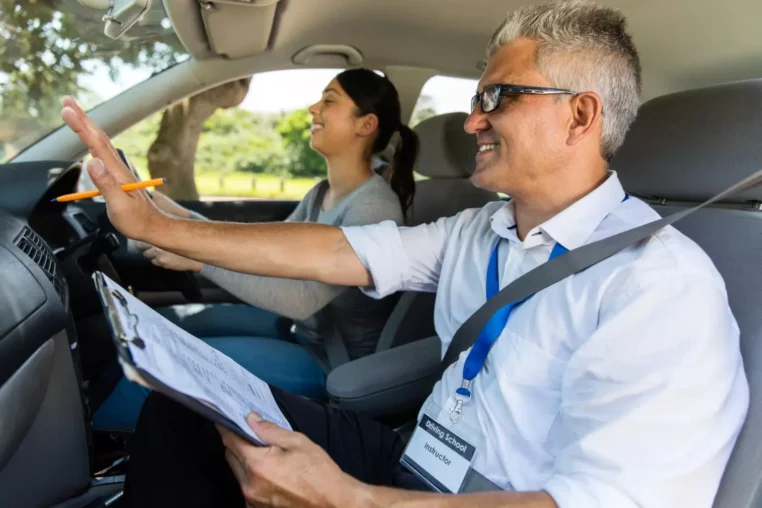Learning to drive is a significant milestone in many people’s lives, marking the beginning of newfound independence and freedom. When it comes to learning how to drive, there are two main types of vehicles: manual and automatic. Over the past decade, automatic driving lessons have gained massive popularity, especially among beginners. But what exactly are automatic driving lessons, and how do they work? In this article, we will explore everything you need to know about automatic driving lessons, including their benefits, what to expect during the lessons, and details about automatic driving lesson prices.
What Are Automatic Driving Lessons?
Automatic driving lessons are training sessions designed to teach learners how to operate an automatic transmission vehicle. Unlike manual cars, automatic vehicles do not require the driver to manually change gears using a clutch pedal. Instead, the car automatically shifts gears as the vehicle accelerates or decelerates. This key difference simplifies the driving process, allowing learners to focus more on road awareness, traffic rules, and steering control rather than worrying about gear changes.
For many learners, especially nervous beginners or those who find clutch control difficult, automatic driving lessons offer a more straightforward and less stressful introduction to driving. These lessons are conducted by qualified driving instructors using automatic transmission cars to provide practical, hands-on experience.
How Do Automatic Driving Lessons Work?
Automatic driving lessons typically follow a structured approach similar to manual driving lessons, but with some distinct differences due to the nature of the vehicle. Here’s a breakdown of how these lessons usually work:
1. Initial Assessment
Most driving schools begin with an initial assessment to evaluate the learner’s knowledge of road signs, traffic rules, and basic vehicle control. This helps instructors tailor the lessons according to the learner’s skill level and needs.
2. Introduction to the Automatic Car
In the first few lessons, learners get familiar with the automatic car’s controls. This includes understanding the gear selector, which usually has positions such as Park (P), Reverse (R), Neutral (N), and Drive (D). The instructor explains how the car shifts gears automatically and the importance of using the brake pedal instead of a clutch.
3. Basic Driving Skills
Learners practice basic skills such as starting the car, accelerating smoothly, braking, steering, and parking. Since the automatic car handles gear changes, students can focus entirely on these fundamental skills without the distraction of changing gears.
4. Handling Traffic and Road Conditions
Once basic control is achieved, lessons progress to driving on quiet roads and then busier streets. Learners practice merging into traffic, navigating roundabouts, obeying traffic signals, and parking in different scenarios, all while gaining confidence behind the wheel.
5. Advanced Driving Techniques
Towards the later stages, instructors teach advanced skills like hill starts, reversing around corners, emergency stops, and eco-driving techniques. These lessons prepare learners for the driving test and real-world driving challenges.
6. Mock Driving Test
Before the official driving test, most instructors offer mock tests to simulate the exam experience. This helps learners identify areas for improvement and build test-day confidence.
Benefits of Automatic Driving Lessons
Easier to Learn
Automatic cars are easier to drive because there is no need to manage clutch control or gear shifting. This reduces the cognitive load on learners, making it ideal for nervous or older learners.
Faster Learning Curve
Many students find that they learn to drive more quickly with automatic vehicles since they can concentrate fully on steering, observation, and traffic awareness. This often means fewer lessons are needed overall.
Reduced Stress
Learning to drive is stressful enough without having to master complex clutch control. Automatic driving lessons eliminate this stressor, allowing learners to feel more relaxed and confident behind the wheel.
Suitable for All Ages and Abilities
Automatic driving lessons cater well to people with physical disabilities or those who may have difficulty operating a manual gearbox.
What to Expect from Automatic Driving Lessons Prices?
When considering driving lessons, one of the primary concerns for many learners is the cost. Automatic driving lessons prices can vary based on several factors such as location, driving school reputation, instructor experience, and lesson duration.
Average Prices
Generally, automatic driving lessons tend to be slightly more expensive than manual lessons because automatic cars are often pricier to maintain and purchase. On average, learners can expect automatic driving lessons prices to range from £25 to £35 per hour in the UK or $40 to $60 per hour in the US. However, prices may vary widely depending on your city or region.
Package Deals
Many driving schools offer package deals or block bookings, which can significantly reduce the cost per lesson. For example, buying a package of 10 or 20 lessons upfront often results in a discount compared to paying for single lessons.
Additional Costs
Learners should also budget for the practical driving test fee and any theory test fees, which are separate from lesson prices. Some schools include the test fees in their packages, so it’s essential to clarify this when booking.
How to Choose the Right Driving School for Automatic Driving Lessons?
Selecting the right driving school is crucial to ensure you receive quality instruction and good value for your money. Here are some tips when choosing a school for automatic driving lessons:
- Check Reviews and Ratings: Look for schools with positive reviews from past learners.
- Qualified Instructors: Make sure the instructors are certified and have experience teaching automatic cars.
- Flexible Scheduling: Find a school that offers flexible lesson times to fit your availability.
- Transparent Pricing: Ask about automatic driving lesson prices upfront and check for any hidden costs.
- Vehicle Condition: Ensure the school uses well-maintained automatic cars that are safe and comfortable.
Are Automatic Driving Lessons Right for You?
Choosing between automatic and manual driving lessons depends on your personal preferences and goals. Automatic driving lessons are perfect if you:
- Want an easier and quicker way to learn driving?
- Plan to drive mainly automatic cars in the future.
- Have difficulty using a manual gearbox due to physical limitations or anxiety.
- Prefer a less stressful learning experience.
However, if you want more control over the car and plan to drive manual vehicles, manual lessons may be more suitable.
Final Thoughts
Automatic driving lessons offer a convenient and effective way for many learners to get on the road quickly and safely. With the absence of gear shifting and clutch control, these lessons focus more on driving skills and road awareness, which often results in faster progress. While automatic driving lessons prices may be slightly higher than manual lessons, many learners find the benefits outweigh the extra cost.
When choosing your driving school, take the time to research, compare prices, and select an instructor who makes you feel comfortable and confident. With the right lessons, you’ll be ready to pass your driving test and enjoy the freedom of driving your automatic car in no time.




